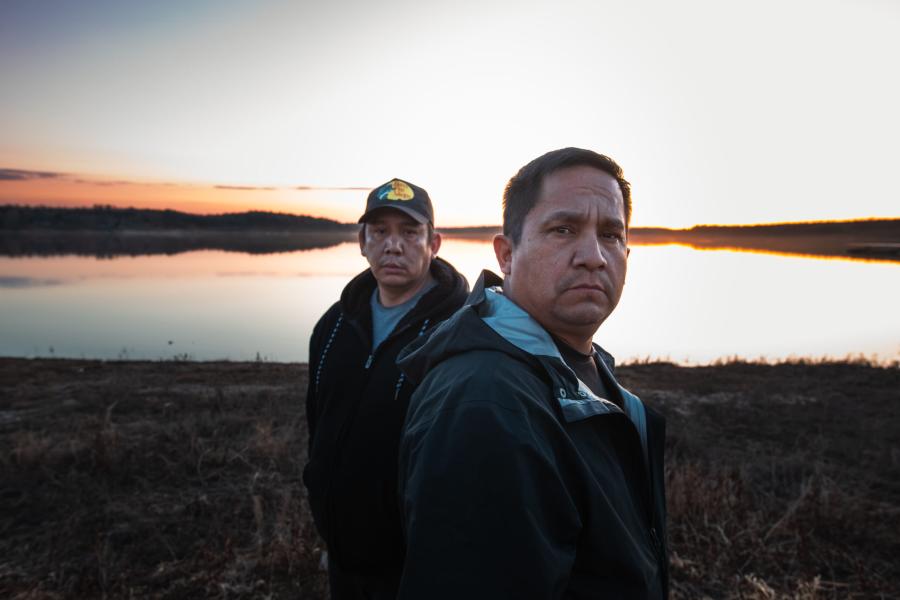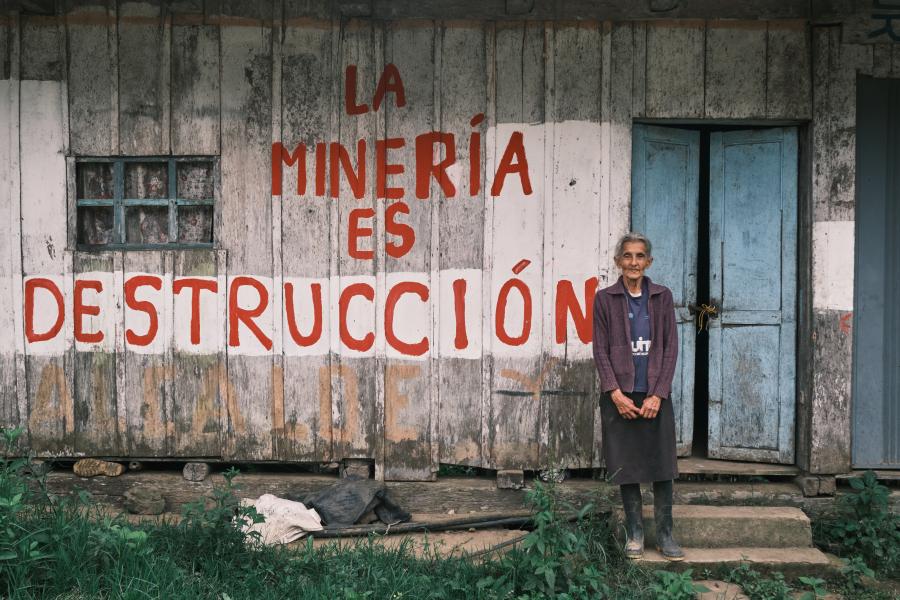For 2000 years or more, the Innu people have lived on, by and with the land they call Nitassinan, a vast territory of forests, lakes, rivers, and barrens, known to European explorers and settlers as the Labrador/Québec Peninsula. Travelling by snowshoe and tobaggan along traditional hunting and trapping routes in winter, and returning each summer to fish camps along the coast or lakes and rivers, the Innu have developed and still maintain one of the most sustainable subsistence-based cultures in North America. Today, the Innu are being pressured to give up more and more of their land-base, knowledge-base, livelihood, and cultural heritage as government and private-owned mining, drilling, logging, highway construction, and hydroelectric dam schemes move into their territory. Meanwhile, NATO "customers," including the British, Dutch, German, and Italian air forces, conduct low-level flight training and bombing practice over Innu lands at the invitation of the Canadian Forces at Goose Bay.(2)
The invasion of Innu territory calls for an international response. The International Federation for Human Rights, the Vermont Friends of Nitassinan and the Parisian Nitassinan Comité de Soutien aux Indiens des Amériques, as well as the Washington D.C. Defenders of Wildlife, have campaigned at various times to defend Innu self-determination. In 1999, London-based Survival International's extensive human rights report, Canada's Tibet: the Killing of the Innu, exposed the racist assumptions of cultural superiority behind Canada's occupation of Nitassinan and pointed out Canada's obligations to the Innu under international law. In April 2000, two Indonesian activists visited the Innu community at Utshimassits (Davis Inlet) to share information on INCa, a transnational mining corporation that has betrayed the people of Sulawesi and is not likely to keep any promises to the Innu once it starts nickel mining in Voisey's Bay.
Cultural Survival is working to support the Innu Nation in their land claim negotiations with Canada and the regional governments of Québec and Newfoundland. The next several issues of CS Quarterly will provide details on the environmental and social threats the Innu face while their land claims and federal Indian status go unrecognized. We will also report on the progress towards a settlement, describing past struggles and current strategies for successful negotiation with government and private developers. We hope this information proves useful to other communities facing similar pressures.
In this issue, we focus on the destruction and poisoning of Innu waterways by the massive Churchill Falls hydroelectric project. New Englanders currently purchase five to twenty percent of their electricity from Hydro-Québec, and the company, in collaboration with Newfoundland and Labrador Hydro, plans to increase its share of the U.S. market with the construction of a second large hydro project on the Lower Churchill River. The Innu and their allies demand a halt to all industrial development in Nitassinan until Canada recognizes Innu ownership of their land and its resources. We urge New England electricity consumers to protest any purchase of hydro-power generated by dams constructed without Innu consent (please see addresses on page 38).
Death by Water The Damming of the Churchill
Until about 30 years ago, the beloved roar of Patshetshunau, "Great Steam Rising," the second largest waterfall in North America, could be heard from ten miles away. For the Innu, this beautiful and never-ending sound was as familiar and reliable as the sun and the moon.(3) It was unthinkable that a 245 foot waterfall could be stolen -- silenced. But in 1966, without any warning or consultation with the Innu, the premier of Newfoundland, Joey Smallwood, signed a deal with Québec to dam the Churchill River upstream from Patshetshunau.(4) In 1971, the year the first part of the project was completed, the Innu returned to their camps to find the land flooded, tens of thousands of animals drowned, their burial grounds underwater, and their canoes, boats, tents, fishing gear and other belongings washed away. The project flooded 2280 square miles of lands, but the resulting reservoir of adjoined, ecologically altered lands, wetlands, lakes and rivers covers 4120 square miles.(5) Visible from the moon, the Smallwood Reservoir is one of the largest in the world. And what did the Innu people receive in compensation for the deluge of their home, their belongings, their families' graves? Nothing. One wonders how they teach the story of the Flood to Innu children in Sheshatshiu.
(1). Samson, C., Wilson, S., & Mazower, J. (1999). Canada's Tibet: The Killing of the Innu. London: Survival International.
(2). Low-level flying was banned in Italy in 1998 when a U.S. marine corps jet severed a ski lift cable, killing 20 people. The Italian Air Force will now pay Canada up to $9 million annually to fly -- as low as 100 feet -- over a more "cost-effective venue," the hunting and camp grounds of Innu families.
(3). Tshaukuesh Penashue described her family's memories of Patshetshunau at Cultural Survival's November 1999 conference on dams.
(4). In 1961, the Newfoundland provincial government authorized Churchill Falls Labrador Corporation (CFLCo) to develop the watershed, and in 1969 signed a deal to sell the power to Hydro-Québec (HQ) to transmit and market. The Newfoundland government now owns 65.8% share capital in CFLCo. Hydro-Québec (HQ) owns the remaining share capital.
(5). When a lake or river is flooded and becomes part of a reservoir, its hydrology and species composition are altered. The total area of the reservoir -- not just the terrestrial habitat lost -- is ecologically significant.
Article copyright Cultural Survival, Inc.



